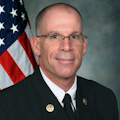As Firehouse Sees It: The System Let Them Down
Over the past nine years, I’ve shared in countless presentations that the photos we most cherish within our profession (e.g., magazine covers, textbooks, recruitment brochures) are those that most oftentimes depict systemic failures of the fire service. To some this may sound like an overly critical statement, but in reality, absent a manmade or natural disaster, a fire is a failure of our system.
In order for a fire to occur, our codes must have failed to prevent the fire through proper engineering, a lack of education or less-than-aggressive enforcement measures. In other cases, we may simply have failed to educate the public on how to control or prevent the fire.
Winston Churchill once said, “We must always look forward, but we have to understand our history in order to not repeat the mistakes of the past. I have seen too many instances where people continue to pursue wrong courses of action because they do not take the time to think critically about what has happened in the past.”
While history has provided the fire service many lessons, never have Churchill’s words been more telling than they are now.
On New Year’s Eve 2015, social media outlets and news channels around the world were providing live coverage of a rapidly developing fire at the Address Downtown hotel and residential high-rise in Dubai. Dramatic video footage broadcast what would appear certain to become a historic fire with a major loss of life. Amazingly, everyone evacuated the building, the fire was brought under control, and only 16 injuries were reported with no deaths directly attributed to the fire.
Fast-forward to 2 a.m. on Feb. 21, 2015, when a grill on a balcony at the Torch Tower in Dubai (one of the world’s tallest residential buildings) ignited a fire on the 50th floor that rapidly spread to the 79th floor. Again, a fire that would appear to be a multiple-fatality event was extinguished within two hours, with only seven minor injuries reported.
Then on June 14, 2017, at the Grenfell Tower in London, an electrical short from a refrigerator ignited a fire on the fourth floor, rapidly consuming the upper floors of the 24-story building and killing more than 80 civilians.
There’s a common theme to these three fires, rapid fire spread and exterior cladding. There are also some very telling differences among them: minimal injuries compared to a significant number of fatalities; occupant evacuation procedures versus protect-in-place procedures; and modern fire protection technologies versus a dated alerting system and no fire sprinklers, to name a few.
While there are many facts that have yet to be published from the Grenfell Tower fire, the sad truth is, like with so many historic events, the predictable losses and preventative solutions were revealed many years prior. The system simply failed to react.
In some cases, the “system” might be a political one, with politicians’ unwillingness to adopt a proposed fire code. In other cases, it might be the builders who use or construct buildings with unsafe materials or less-than-quality craftsmanship. In still others, the system might be the fire department and its failure to employ modern fire tactics and best practices or a fire prevention/code enforcement failure to inspect for compliance and enforce existing code requirements.
Since the Grenfell Tower fire, the Torch Tower has experienced yet another large-loss fire, three civilians have been killed in an unprotected high-rise in Honolulu, and thousands of buildings in the U.S. and around the world (including more than 30,000 in Dubai alone) have been identified as being constructed with combustible cladding. The question now is what will be done?
High-rise fires are not a hazard that every firefighter or fire department may face within their respective jurisdiction, but the lessons to be learned from these recent events offer far too many opportunities to better understand building construction, code enforcement, modern tactics and fire protection technologies for any of us to ignore. To do so is an open invitation for yet another preventable tragedy.
Systems failures are inevitable within the fire service and any industry where human interaction takes place, but we all must strive to learn the critical lessons that exist from these and other tragic events to ensure that those whom we are sworn to protect never express that the system let them down.
About the Author

Timothy E. Sendelbach
Editor-in-Chief
Timothy E. Sendelbach is a 30-year student and educator of the fire and emergency services, and former editor-in-chief for Firehouse. He has served as an assistant fire chief with the North Las Vegas, NV, Fire Department, as the chief of training for Savannah (GA) Fire & Emergency Services and as assistant fire chief for Missouri City, TX, Fire & Rescue Services. He is a credentialed Chief Fire Officer and Chief Training Officer and has earned a master’s degree in leadership from Bellevue University, bachelor’s degrees in fire administration and arson and an associate’s degree in emergency medical care from Eastern Kentucky University.
